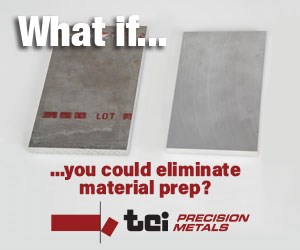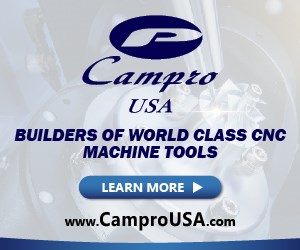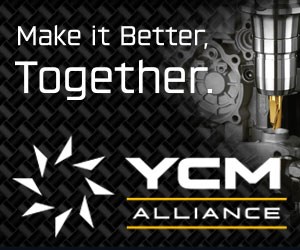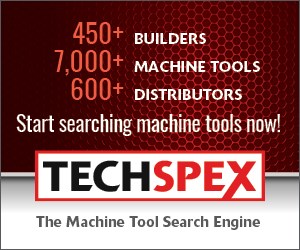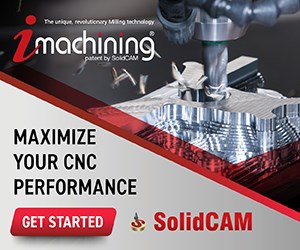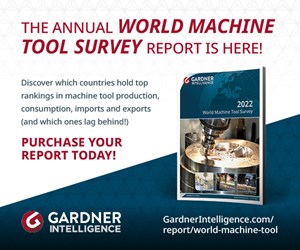Gaging By Computer
Computers are rarely necessities for standard dimensional measurements, although almost any application can be enhanced through the use of PC-based gaging software. And while the use of "gaging computers" cannot serve as a substitute for sound gaging practice, the potential benefits they offer are greater, and the barriers to entry lower than ever.
Share



Hwacheon Machinery America, Inc.
Featured Content
View More



.png;maxWidth=45)
DMG MORI - Cincinnati
Featured Content
View More

Computers are rarely necessities for standard dimensional measurements, although almost any application can be enhanced through the use of PC-based gaging software. And while the use of "gaging computers" cannot serve as a substitute for sound gaging practice, the potential benefits they offer are greater, and the barriers to entry lower than ever.
At about $5,000 for a complete hardware and software package, a gaging computer is often cost-justified strictly on the basis of its ability to display multiple dimensions simultaneously, compared to the cost of multiple amplifiers or column gages to provide the same display capabilities. The break-even usually occurs at just four or five simultaneous measurements; as the number of measurements increases, the PC becomes evermore economical.
For simultaneous measurements, multiple "light bars" can be arranged on the monitor, each bar growing or shrinking in height in response to the part dimension. The display can be programmed for "stoplight gaging," in which the bar changes color as the measurement shifts between in-tolerance (green), approaching limits (yellow), or out of tolerance (red). Measurements appear simultaneously in a numerical format beside each bar and a quick glance verifing that all bars are green usually confirms the stability of a process.
By mathematically combining signals from multiple gage transducers, PCs can be used for complex measurements such as flatness, parallelism, squareness, taper, and distance between centers, or to perform simultaneous diameter and out-of-roundness checks on a single feature. PCs typically have 16 or 32 input/output ports (usually expandable), and support essentially all mathematical operations, allowing flexibility in the number and the arrangement of the checks. They also offer all the capabilities of digital gaging amplifiers, including auto-zeroing, adjustable resolution, reversible polarity (that is, plus/minus direction), and dynamic functions like "min," "max," and TIR. Most amplifiers, however, permit only two simultaneous inputs, and their range of mathematical functions is typically limited to +, -, *, and /.
At a higher level, software can lead the operator step by step through complex setup and measurement procedures, presenting instructions through a combination of text, graphics, and animation. For instance, if the inspection task involves three hole diameters, the software may be programmed to give different instructions if one, two, or three of those holes are out of tolerance. The same programming can be used to trigger automatic parts sorting devices, or feed back to production machinery for closed loop process control.
While there are numerous free-standing SPC packages, gaging computer software usually bundles these functions as well, easing the process of transferring data for the generation of X-bar and R charts, histograms, and all the other elements of SPC. Measurements can be automatically tagged with production data (such as machine number, operator, date and time, and events such as broken tools and coolant changes), and sorted and analyzed accordingly. SPC results can be displayed simultaneously with the results of an individual gaging trial, for a micro- and macro-view of the process at any moment. Finally, the ability to network PCs can eliminate the need for roving technicians with portable data loggers, and gives managers the ability to monitor all shopfloor processes from a central location.
Just a few years ago (when the world was still MS-DOS), PCs were intimidating to many users, and required substantial training to generate benefits in the hands of shopfloor users. That has changed, partly because the "average" machinist now does on-the-fly CNC programming, and partly because of the proliferation of Windows. With their numerous cost-benefits and the elimination of the "fear factor," gaging computers should soon become a common productivity-enhancer in machine shops.
Read Next
5 Rules of Thumb for Buying CNC Machine Tools
Use these tips to carefully plan your machine tool purchases and to avoid regretting your decision later.
Read MoreSetting Up the Building Blocks for a Digital Factory
Woodward Inc. spent over a year developing an API to connect machines to its digital factory. Caron Engineering’s MiConnect has cut most of this process while also granting the shop greater access to machine information.
Read MoreBuilding Out a Foundation for Student Machinists
Autodesk and Haas have teamed up to produce an introductory course for students that covers the basics of CAD, CAM and CNC while providing them with a portfolio part.
Read More

























